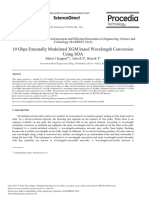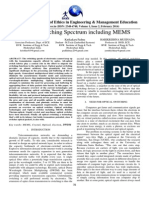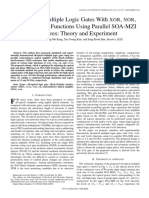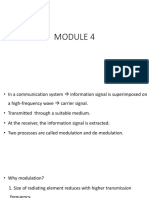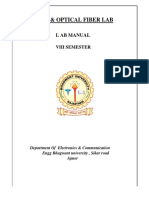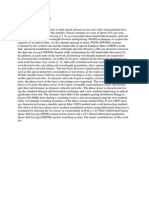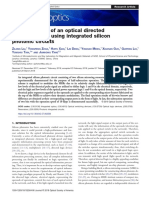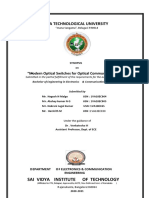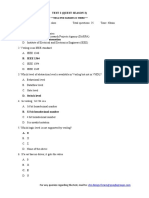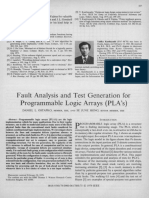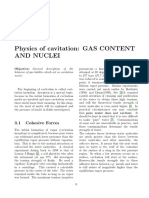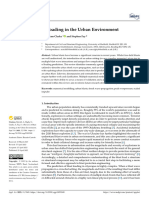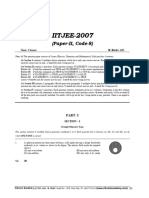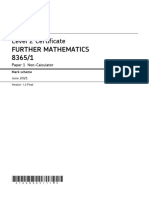0% found this document useful (0 votes)
91 views6 pagesToad Using Hybrid
The document proposes an all-optical hybrid adder circuit design using terahertz optical asymmetric demultiplexers (TOADs). In the initial design phase, naive implementations of ripple carry and carry lookahead adders using TOADs are presented. In the final design phase, optical cost and delay are considered to improve the design. Experimental results show the proposed design reduces optical cost and overall delay compared to previous designs. The incurred design cost metrics are also compared favorably to related work, demonstrating considerable improvement over naïve TOAD adder circuit designs.
Uploaded by
sushmitha vCopyright
© © All Rights Reserved
We take content rights seriously. If you suspect this is your content, claim it here.
Available Formats
Download as PDF, TXT or read online on Scribd
0% found this document useful (0 votes)
91 views6 pagesToad Using Hybrid
The document proposes an all-optical hybrid adder circuit design using terahertz optical asymmetric demultiplexers (TOADs). In the initial design phase, naive implementations of ripple carry and carry lookahead adders using TOADs are presented. In the final design phase, optical cost and delay are considered to improve the design. Experimental results show the proposed design reduces optical cost and overall delay compared to previous designs. The incurred design cost metrics are also compared favorably to related work, demonstrating considerable improvement over naïve TOAD adder circuit designs.
Uploaded by
sushmitha vCopyright
© © All Rights Reserved
We take content rights seriously. If you suspect this is your content, claim it here.
Available Formats
Download as PDF, TXT or read online on Scribd
/ 6









